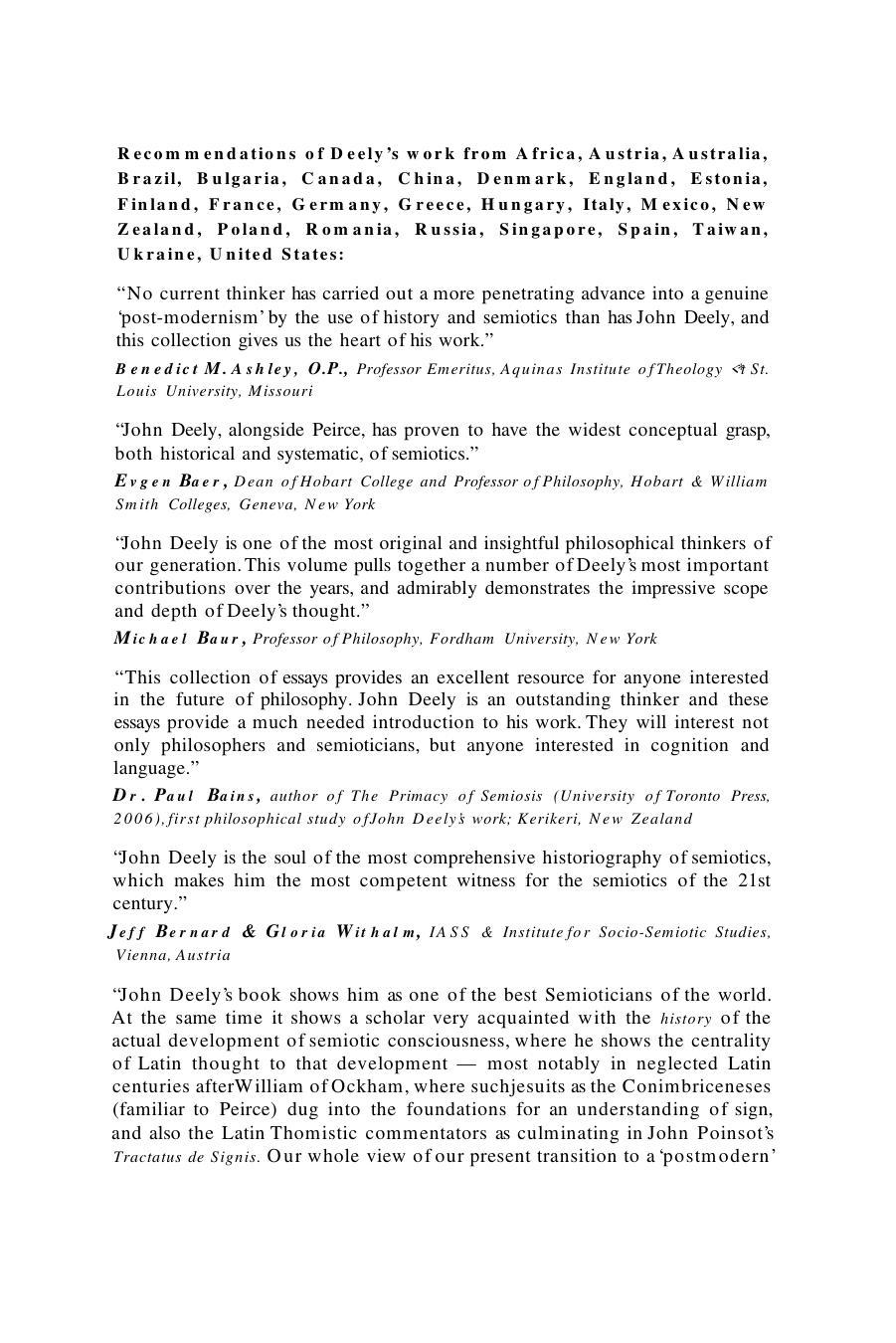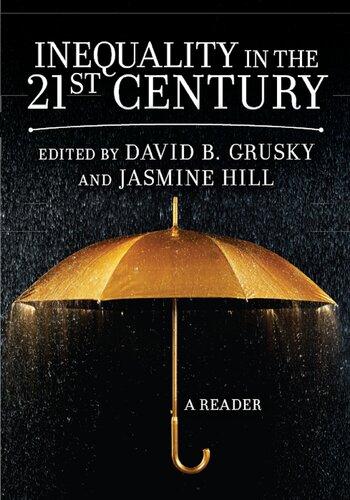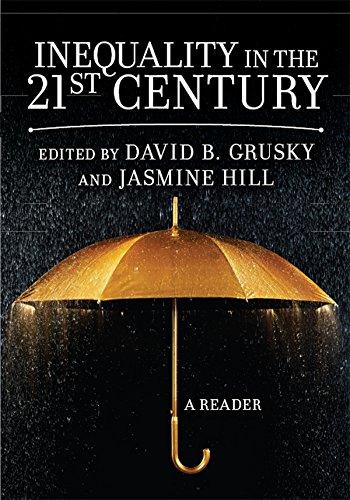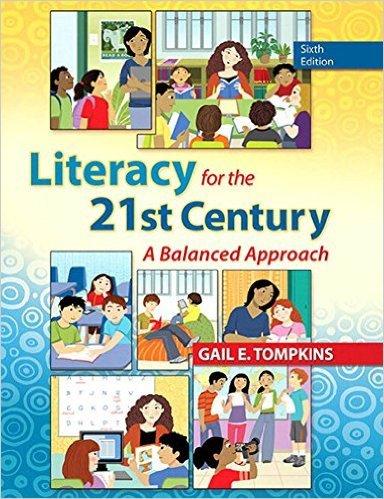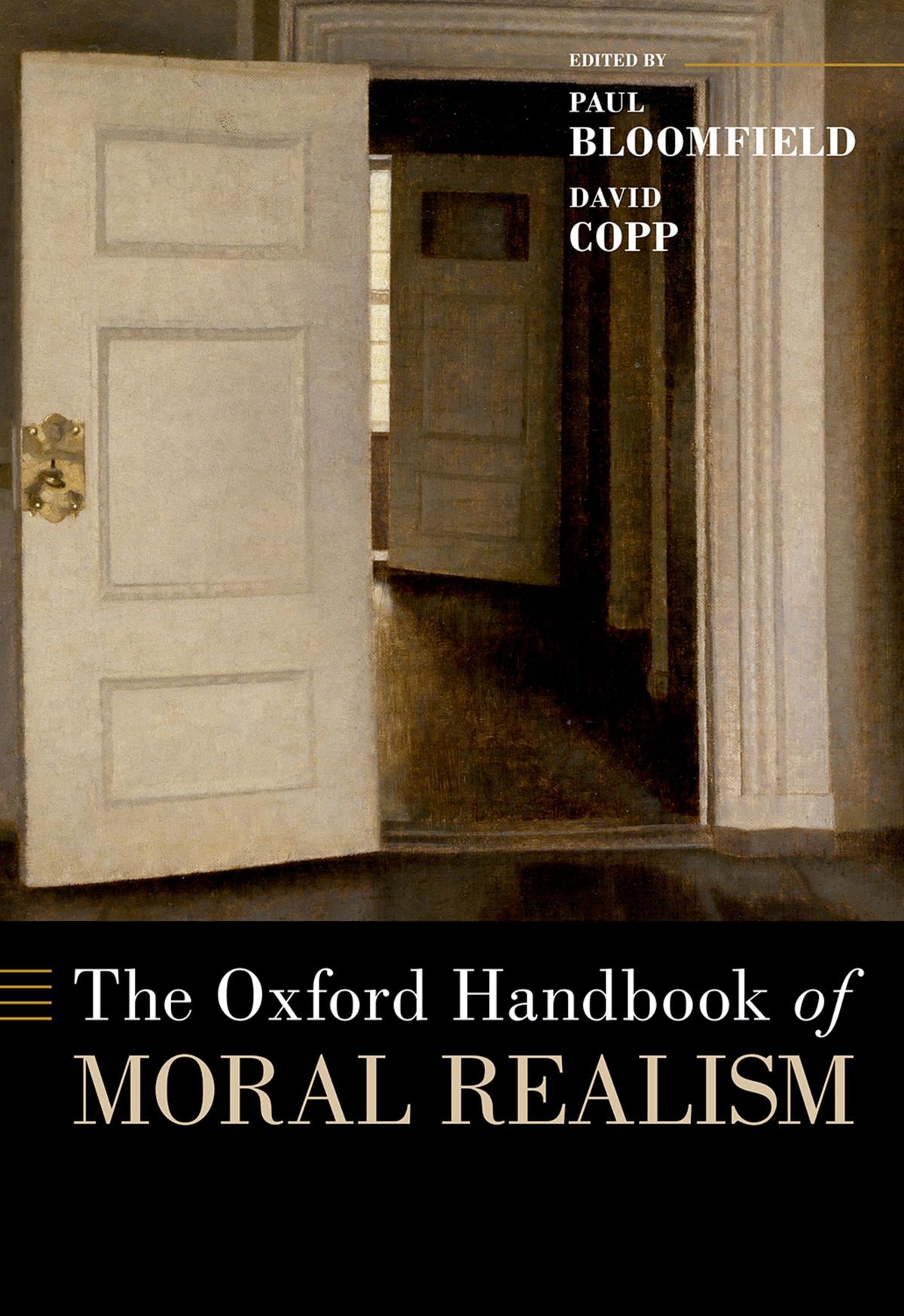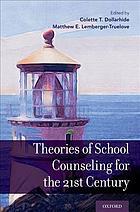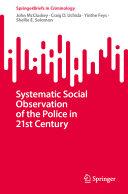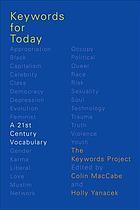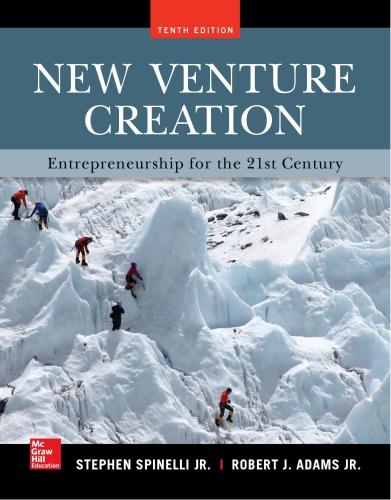Realism for the 21st century : a John Deely reader Paul Cobley
Visit to download the full and correct content document: https://ebookmass.com/product/realism-for-the-21st-century-a-john-deely-reader-paul -cobley/
More products digital (pdf, epub, mobi) instant download maybe you interests ...
Inequality in the 21st Century: A Reader David B. Grusky
https://ebookmass.com/product/inequality-in-the-21st-century-areader-david-b-grusky/
Inequality in the 21st Century: A Reader 1st Edition
E-book PDF Version – Ebook PDF Version
https://ebookmass.com/product/inequality-in-the-21st-century-areader-1st-edition-e-book-pdf-version-ebook-pdf-version/
eTextbook 978-0132837798 Literacy for the 21st Century: A Balanced Approach
https://ebookmass.com/product/etextbook-978-0132837798-literacyfor-the-21st-century-a-balanced-approach/
Literacy for the 21st Century: A Balanced Approach Gail E. Tompkins
https://ebookmass.com/product/literacy-for-the-21st-century-abalanced-approach-gail-e-tompkins/
The Oxford Handbook of Moral Realism Paul Bloomfield
https://ebookmass.com/product/the-oxford-handbook-of-moralrealism-paul-bloomfield/
Theories of school counseling for the 21st century
Dollarhide
https://ebookmass.com/product/theories-of-school-counseling-forthe-21st-century-dollarhide/
Systematic Social Observation of the Police in the 21st Century John Mccluskey
https://ebookmass.com/product/systematic-social-observation-ofthe-police-in-the-21st-century-john-mccluskey/
Keywords For Today: A 21st Century Vocabulary 1st Edition Colin Maccabe
https://ebookmass.com/product/keywords-for-today-a-21st-centuryvocabulary-1st-edition-colin-maccabe/
New venture creation : entrepreneurship for the 21st century Tenth Edition. Edition Stephen Spinelli Jr
https://ebookmass.com/product/new-venture-creationentrepreneurship-for-the-21st-century-tenth-edition-editionstephen-spinelli-jr/
Recommendations ofDeely’s work from Africa,Austria,Australia, Brazil, Bulgaria, Canada, China, Denmark, England, Estonia, Finland, France, Germany, Greece, Hungary, Italy, Mexico, New Zealand, Poland, Romania, Russia, Singapore, Spain, Taiwan, Ukraine, United States:
“No current thinker has carried out a more penetrating advance into a genuine ‘post-modernism’by the use of history and semiotics than hasJohn Deely, and this collection gives us the heart of his work.”
Benedict M. Ashley, O.P., Professor Emeritus, Aquinas Institute ofTheology <*t St. Louis University, Missouri
“John Deely, alongside Peirce, has proven to have the widest conceptual grasp, both historical and systematic, of semiotics.”
E vgen Baer , Dean ofHobart College and Professor of Philosophy, Hobart & William Smith Colleges, Geneva, New York
“John Deely is one of the most original and insightful philosophical thinkers of our generation.This volume pulls together a number ofDeely’s most important contributions over the years, and admirably demonstrates the impressive scope and depth of Deely’s thought.”
M ichael Baur , Professor of Philosophy, Fordham University, New York
“This collection of essays provides an excellent resource for anyone interested in the future of philosophy. John Deely is an outstanding thinker and these essays provide a much needed introduction to his work. They will interest not only philosophers and semioticians, but anyone interested in cognition and language.”
D r . Paul Bains , author of The Primacy of Semiosis (University of Toronto Press, 2006),first philosophical study ofJohn Deely’s work; Kerikeri, New Zealand
“John Deely is the soul of the most comprehensive historiography of semiotics, which makes him the most competent witness for the semiotics of the 21st century.”
J eff Bernard & G loria W ithalm , IASS & Institute for Socio-Semiotic Studies, Vienna, Austria
“John Deely’s book shows him as one of the best Semioticians of the world. At the same time it shows a scholar very acquainted with the history of the actual development of semiotic consciousness, where he shows the centrality of Latin thought to that development — most notably in neglected Latin centuries afterWilliam ofOckham, where suchjesuits as the Conimbriceneses (familiar to Peirce) dug into the foundations for an understanding of sign, and also the Latin Thomistic commentators as culminating in John Poinsot’s Tractatus de Signis. Our whole view ofour present transition to a‘postmodern’
era and its relation to the premodern epochs of philosophy is changed by this work.”
Mauricio Beuchot , O.P., Ph.D. Researcher and Professor at the Seminar of Hermeneutics of the Institute de Investigaciones Filologicas of the Universidad National Autonoma dc Mexico
“John Deely s legacy is a pivotal element in the future of both Semiotics and Thomistic thought.”
Max B onilla , SSL, STD, Vice Presidentfor Academic Affairs, Franciscan University of Steubenville, Ohio
“The indispensable Realism for the 2 V Century shows that only if we integrate the richness of our millennial philosophical heritage can we hope to understand the role and the limits of science and logic, and map their relation to ethics and signs in the new era that is opening up before us.”
Thomas F. Broden , Professor of French, Purdue University, West Lafayette, Indiana
“Dr. Deely is a pioneer in demonstrating the implications of Thomistic thought for problems today. He maintains the thought of St.Thomas as a living force in the intellectual culture,rather than assimply akind ofmuseum piece among the exhibits ofhistory, making that thought come to the attention ofthinkers who would not, in the normal course of events, have any particular interest inThomism at all.”
Padre R oberto B usa , S.J., Pontificia Universita Gregoriana di Roma alia facolta di Filosofia dell’Aloisianum di Gallarate, all’ Universita Cattolica del Sacro Cuore di Milano, Italy; creator ofthe Index Thomisticus database
“From his early work on Brentano, Heidegger and evolution through his ground-breaking contributions to semiotics, John Deely has been one of our most important, brilliant and prolific philosophers. And he is certainly the most original. Hopefully, this anthology will introduce many new people, especially younger philosophers and graduate students, to Deely’s work. Philosophy will be much better off if it does.”
J ohn C. Cahalan , Editor, Resourcesfor Modern Aristotelians, Methuen, Massachusetts
“Prof. Cobley’s assemblage of a John Deely Reader provides us with a very rare example ofdeep multidisciplinaryinsightinto the intersection ofdifferentdomains — from Science to Humanities.The book’s theoretical framework incorporates a variety of philosophical, anthropological and semiotic backgrounds. Far more: it gives the reader illustrations from biology and theory of evolution and even physics to ethics and postmodern understanding of the liberal arts. It is a book of the new era.”
P rof . Tatiana C hernigovskaya , PhD, Dsc, President of Russian Association for Cognitive Studies, Honorary member ofthe Semiotic Society ofFinland, Foreign member of the Norwegian Academy of Sciences and Letters Member of the steering committeefor cognitive science in Europe; St. Petersburg, Russia
“John Deely is one the giants of contemporary semiotics, whose pivotal works cover the whole span of the field, from the theoretical to the philosophical. This collection of some of his major writings constitutes a veritable map that charts where the field has been and where it will be heading.These are essential readings for anyone who wishes to enter into that field seriously and gainfully.”
M arcel D anesi , Department ofAnthropology, University ofToronto, Canada; Editorin-Chief Semiotica
“John Deely has not only paid attention to the Second Scholasticism but also to the first one, and (while dealing with questions that are at the center stage of contemporary culture, and working across all the disciplines,both the humanities and the sciences) he has contributed to expand the knowledge of the Thomistic tradition beyond the confines of the Catholic world.”
Umberto E co , Universita degli Studi di Bologna, Italy
“As the 20th century projects of analytic philosophy, critical theory and naive scientific epistemology rapidly begin to fade from view, the stage is set at last for the ascendance of philosopher John Deely s four-and-a-half decades-long counter-project, ushering in the fourth great age of human understanding: the age of semiotic realism — what Deely calls ‘The Way of Signs’. Providing the newcomer with a concise one-stop overview ofDeely s forty-year-long project, while at the same time assembling the readings in such a fashion as to yield new insights even for those scholars already well acquainted with Deely’s work, Paul Cobley’s brilliantly assembled and edited Realism for the 2lst Century. A John Deely Reader is a long-overdue compilation of the works of a philosopher who is perhaps the most far-seeing thinker of our time.”
D onald Favareau , University Scholars Programme, National University of Singapore
“Deely s study of the implications of evolution as it relates to the nature of the human person requires a rethinking of ethics and the context of natural law.”
D esmond J. Fitz G erald , Professor Emeritus, University of San Francisco, California
“Deelys integration of zoosemiotics arid evolutionary theory into a philosophy of human understandingoffersamore comprehensiveaccountofourcognitivecapacities than is found in linguistically-based or logically-biased speculative philosophies.”
R obert S. H atten ,Jacobs School ofMusic, Indiana University, Bloomington
“This book enables us to gauge the compass ofJohn Deely’s heuristic project. It unveils the stages in a synthesis which the author has been elaborating since 1966 to trace the emergence of Homo semioticus. John Deely achieves the feat of combining the rigor of classical philosophy with the powerful imagery of the epic of knowledge, conjugating the realism of ethics and the abstraction of formal semiotics. In this way, he opens horizons of thought absolutely essential for the 21st Century.”
A nne H enault , Universite de Paris IV Sorbonne
“That truth and illusions are not the same is an insight human beings share with each other and with no other animals in the world. They know this because they are semiotic animals; they know about the action ofsigns,semiosis. But to reinstall a semiotic realism in post-Kantian Western thinking based on this insight is no small task.Yet,this has been the ambition ofjohn Deely’sgroundbreaking writings throughout three decades.The reader of this volume will be richly rewarded.”
J esper H offmeyer , Department of Molecular Biology, University of Copenhagen, Denmark
“John Deely is a brilliant philosopher and scholar who knows how to combine the old and the new with a sharp historical knowledge of the most important issues.That’s why his work should be read by students as well as by professional philosophers and all those who want to achieve a deeper understanding in the humanities.”
P rof , dr hab . P iotr Jaroszynski , Chair ofthe Philosophy of Culture,John Paul II Catholic University ofLublin, Poland
“It is amazing thatJohn Deely actually succeeds to add a new dimension to the study of semiotics — but then, who else would be able to do so?”
J orgen D ines J ohansen , Professor ofGeneral and Comparative Literature, University ofSouthern Denmark
“ProfessorJohn Deely has made an extensive contribution to the development of philosophical thought. His research in the area of semiotics and the history of philosophy lays down a new context for understanding reality in terms of human evolution. Realismfor the 21st Century.A John Deely Reader is a great book that can become the roadmap for mutual understanding in future years.”
A natouj Karas , PhD, Professor and Chair of Philosophy, Lviv Franko National University, Ukraine
“As a Chinese scholar engaged in studies of semiotics, phenomenology, and hermeneutics, I am greatly impressed byJohn Deely s wide intellectual horizon displayed in this excellent Reader. I think it will also arouse a deep interest among Chinese readers.”
Y ouzheng Li , Guest Senior Fellow at ChineseAcademy ofSocial Sciences, Beijing, and Vice-President ofIASS
“Deely is today among the leading semioticians who has elaborated on both Peirce s and Sebeok’s theories, but he is also an original author with his own semiotic voice and insights, attempting to expand the understanding of semiosis beyond its traditional limits.”
A lexandros Lagopoulos , Aristotle University, Thessaloniki, Greece
“This impressive collection is a welcome addition to philosophers concerned about philosophical realism in metaphysics, philosophy of mind and moral
theory, together with that mostly uncharted historical territory between late medieval and early modern philosophy.”
A nthony J. Lisska , Maria Theresa Barney Professor ofPhilosophy, Denison University, Granville, Ohio
“John Deely, the most remarkable follower of Charles Sanders Peirce today, represents the philosophical direction of semiotics. His insight into the most complicated problems of semiotics is impressive; even his most provocative claims are always inspiring.”
M ihhail L otman , Estonian Institute ofHumanities, Tallinn; Professor ofSemiotics and Literary Tl'ieory and Senior Researcher, Tartu University, Estonia
“Semiosis and semiotics across history, in nature and in culture, from science to philosophy, from the inert to the living universe, from human body to mental events, fromlogic to ethics,underthe glassesofan expert in the field,who tellsusthe evolution ofhis thinking in the last fifty years and his anticipation for the 21st century.”
Solomon Marcus , Member ofthe Romanian Academy, Emeritus Professor, University of Bucharest, Romania
“This book can be considered as a kind of‘vade-mecum’of the human being in the era of globalization.”
J ean -C laude M barga , Full Professor, University ofYaounde I, Cameroon,Africa
“The fruits of a Promethean effort with zeal and passion embracing the entirety of human knowledge in a single Weltanschauung.”
I van M ladenov , author of Conceptualizing Metaphors. On Charles Peirce’s Marginalia (Routledge, 2006); Bulgarian Academy of Sciences, Sofia, Bulgaria
“A comprehensive collection of Deely s brilliant papers on topical issues of semiotic philosophy had been a desideratum on the reading list ofall semioticians for a long time. This ‘Deely Reader’fills the gap in the semiotic library and is one more reason to guarantee its author a place among the leading figures if not classics of contemporary philosophy and semiotics.”
W infrjed N oth , Director, Research Centerfor Cultural Studies, Universitdt Kassel, Universitat Kassel, Germany
“InJohn Deely sthought there is always afruitful mixture ofapenetrating analysis concerning some of the most difficult issues in the history of philosophy with a masterful overview of the role of philosophical thought in the 21st century.The reader with a desire to learn will profit greatly from this superb book.”
Jaime N ubiola , University of Navarra, Spain
“This volume is an essential guide for the scholar of philosophy or of semiotics.”
Frank N uessel , Professor of Classical and Modern Languages, University ofLouisville, Kentucky
“Realism is not merely a philosophic or literary trend, but one of the principal aims ofthe human being from its relations to nature, to others, and in the relation of its own body to politics. It is inevitably connected with sign interpretation and the question of truth. The author of the summa Four Ages of Understanding is aware of this, and, in his ever intriguing and fascinating way, considers in this volume the question of realism in its various facets: philosophical, semiotic, gnoseological, logical, ethical, etc. The editor has offered to the reader a wide, shrewd, and keen-witted selection of Deely s very topical texts.”
A ugusto P onzio , Dipartimento di Pratiche Linguistiche eAnalisi diTesti, Facolta di Lingue e Letterature Straniere, Sezione Filosofa e Scienze dei segniUniversita degli Studi di Bari
“By providing a great primer on the work of one of the contemporary world’s few philosophers deserving of the name, Cobley s edition of Deely s essays fills a major need on the present intellectual scene. Deely is one of the few scholars today with the historical background in philosophy capable of helping us properly understand the misbegotten natures ofmodernism and postmodernism ‘falsely so-called’. For this reason alone, serious thinkers should purchase a copy of Cobley’s book and recommend it to others.”
P eter A. R edpath , Full Professor of Philosophy, St.fohn’s University, Staten Island, New York
“Realism for the 21st Century is a must for anyone seriously interested in a broad and philosophically rather than linguistically conceived semiotics. Paul Cobley has done a first-rate job in his selection ofJohn Deely’s most pertinent insights published over the last halfcentury. Readers will be grateful for this original and carefully argued case for realism as an escapable inference from general semiosis.”
H orst R uthrof ,MA, PhD, FICI FAAS, Emeritus Professor ofPhilosophy, Murdoch University, Perth, Western Australia
“The twelve chapters ofthis carefully edited Reader open new semiotic vistas in the broad philosophical panorama of the author of the FourAges of Understanding and ensureJohn Deely aplace ofprominence among the vanguard ofpostmodern intellectual culture.”
P rofessor L ucia Santaella , Director of the Graduate Program in Technologies of Intelligence and Digital Design, Catholic University of Sao Paulo
“Deely s semiotic approach, with its realism ofthe word, shines a distinctive light on the relation between language and reality in the thought of StThomas. This light at the same time reveals a path both distinctive from and yet harmonious with the traditional approaches to metaphysics as ‘first philosophy’.The sections on Brentano and Husserl,Aquinas, Descartes, and Kant are particularly intriguing and important for the matter of a transition to a postmodern era of philosophy in a global intellectual culture.”
K enneth L. Schmitz , Professor Emeritus, University of Toronto, Canada; Pontifcal John Paul II Institutefor Studies on Marriage and Family, Washington, DC
“This volume illuminates the delicate path of Semiotics with a powerful light, leading the reader through fruitful fields of thoughts to the very roots of philosophy.With incredible precision ofcomposition, consistency ofcontent, and clarity of expression, the author depicts the development of Realism, revealing the dependence of postmodern thought on concepts introduced by the Latin Age.This work is a true masterpiece in contemporary philosophical literature.”
Pavlo Sodomora , PhD, ProfessorofLatin and Greek, Department ofLatin Language, Lviv Danylo Halytsky National Medical University, Ukraine
“No one has so elegantly, precisely, and sharply clarified the problematic of representation in philosophy and semiotics asJohn Deely, providing thereby the single most important of the foundation stones for a postmodern era.”
Eero Tarasti , Professor of Musicology, University of Helsinki; Director of the International Semiotics Institute at Imatra, Finland; President of the IASS/AIS (InternationalAssociationfor Semiotic Studies)
“This book provides illuminating readings and discussions of some of the major issues on the relationship between the physical and the mental universe viewed from a holistic and ethical scope ofsemiotics.Besides the semiotic disciplines and theoretical debates,John Deely brings in significant exposition of philosophical perspectives and historical insights into the analyses ofthe formation oflogic and law behind objective reality, to the semiotic and phenomenological controversy over mental events, and especially to the search for and establishment of a new phase of realism in postmodernity.”
H siu - chih T sai , Editor-in-Chief, Chung-Wai Literary Quarterly, National Taiwan University Press; Professor, Department ofForeign Languages and Literatures, National Taiwan University
“Professor Deely is a philosopher; his writings demand reading and re-reading. It is an excellent idea to have a ‘Deely Reader’, where the twelve chapters appear as if in twelve different colors, and the whole reader unites them into a multidimensional picture. People will read and repeatedly read the Deely Reader.”
Vilmos Voigt , Folklore Department Chair, Lorand Eotvos University, Budapest, Hungary
“This volume gathers some of the most important articles byJohn Deely. Deely has roots in the Thomism of the Latin Age both early and late, as well as in the Neothomism of the 20th century. Through the path of Sign, first sketched in Latin by John Poinsot, Deely has resolved many of the problems and paradoxes of modernity facing postmodernity.While he succeeded in giving semiotics its philosophical foundation historically, he also demonstrated that semiotics is the new foundation for philosophy itselfas postmodern.”
M artin W alter , Germany, Editor of the critical edition reprint of Poinsot’s Cursus Philosophicus (Hildesheim: Georg Olms Verlag, 2008)
“John Deely stands foremost among the philosophers working within the expansive domain of semiotics, the study of signification. He is renowned for his incisive penetration into whatever subject he takes up, for the clarity of his writing, and for having singlehandedly revived Joao Poinsot, the first thinker to argue that the triadic nature of the relation constitutive of signification is irreducible. The University of Scranton Press has done us all a great favor in bringing some of Deely s most perceptive writings together in a volume that will be a much-valued reference and standard text.”
W C. Watt, Professor of Cognitive Sciences Emeritus, University of California, Irvine
“All those interested in understanding what a truly postmodern philosophy will look like owe Paul Cobley avery great debt for bringing together,so usefully and in one accessible volume, this distillation ofJohn Deely s deeply well-informed contribution to philosophy over a period of more than 40 years.”
W endy W heeler , London Metropolitan University, England (United Kingdom)
R ealism for the 21st C entury
A John Deely Reader
Edited by Paul Cobley
Scranton, Pennsylvania, USA, and London, England, UK: Scranton University Press
Copyright © 2009 by Paul Cobley and John Deely, with rights of survivor All rights reserved.
Deely,John N.
Realism for the 21st century :aJohn Deely reader / edited by Paul Cobley. p. cm.
Includes bibliographical references and index. ISBN 978-1-58966-148-6 (hardcover) 1. Philosophy, American—20th century. 2. Philosophy,American—21st century. 3. Realism. 4. Semiotics. I. Cobley, Paul, 1963-II.Title B945.D3851C63 2009 191—dc22
2009014979
Editorial Acknowledgments
This book has been in gestation for a while, from the first time I encountered a collection ofphotocopied readings that students at the University ofSt. Thomas, Houston (and elsewhere) were using in the early years ofthis century While in St. Kyrik, Bulgaria, I discussed with Deely the possibility of publishing a book of his essays on realism in relation to semiotics. Eventually, it lead to the volume you are holding in your hands.
I would like to thank a number of people for their patience while this book was coming to fruition. First,Jeff Gainey, who had the wherewithal to contract the Reader in the first place. Secondly, Sara Cannizzaro, who did some crucial scanning and editorial work in the early stages ofputting the ms. together and Stephen Sparks for exceptional proof-reading in the late stages. Thirdly, my colleagues in semiotics who have discussed Deely s work with me over the years: Merja Bauters, Soren Brier, Marcel Danesi, Jesper Hoffmeyer, Guido Ipsen, Jorgen Dines Johansen, Erkki Kilpinen, Kaie Kotov, Kalevi Kull, Dario Martinelli,Winfried Noth,Anti Randviir, Frederik Stjernfelt,Eero Tarasti, and Jean Umiker-Sebeok. Special mention in this respect should be given to Augusto Ponzio and Susan Petrilli, who have not only given me pointers regarding Deely s work but have given immense support to me over the years,as didTom Sebeok, the image ofwhose gesture bringing me together with Deely will remain with me forever.
The most patient ofthe lot are those who have been closest to me during this enterprise,Alison, Stan and,just as I was about to deliver the first version of the manuscript, Elsie.
Lastly,but not least, I need to thank BrookeWilliams for her hospitality and intellectual stimulation, and John Deely, without whose openness and co-operation this project could never have gotten offthe ground. Deelys endeavour is remarkable in any context; yet, in his forging of a philosophical foundation for the future of semiotics, he is truly to be lauded and critically appraised. For his more local helpfulness in putting together this Reader, designed to offer a guide to the way his work has provided this foundation, I can only say that it is equivalent in generosity to his philosophical achievement.
I would also like to thank the following publishers, organizations and individuals for permission to reprint the Deely essays in this volume, as follows: Readings 1, 2, 6, 8, and 10 —The Philosophy Documentation Center and the two ACPA publications, the Proceedings of the American Catholic PhilosophicalAssociation and American Catholic Philosophical Quarterly — Readings 1, 2, 6, and 8; Tire Thomist — Readings 4 and 9;— Mouton de Gruyter — Reading 5; Marilyn Nissim-Sabat and Listening — Reading 1l;Tartu University Press — Reading 7;Ashgate Press — Reading 3. Fourthly, I want to thank Umberto Eco for his permission to reproduce (on pp. 2 & 392) two ofhis cartoons from the 1983 summer that he andJohn Deely taught together the May 30-24June “Historiographical Foundatios of Semiotics”course at Indiana University, Bloomington.
Just as nominalism leads inevitably to idealism, so also inevitably realism leads to semiotics.
Deely 2008: 83
Table of Contents:
Introduction to the Deely Reader: “From Realism to Semiotics” ...................... by
Paul Cobley, Editor
Section I: Change and Process in the Physical Universe
First Reading,from April 1966 “The Emergence of Man: an inquiry into the operation of natural selection in the making of man”
Section II: Ethics
Second Reading,from 1969 .................................. 54 “Evolution and Ethics”
Third Reading,from 2006 ..................................... 74 “Evolution, Semiosis, and Ethics: Rethinking the Context of Natural Law”, with an Appendix on Immortality
Section III: Human and Animal: Zoosemiotics
Fourth Reading,from 1971 .....................................91 “Animal Intelligence and Concept-Formation”
Section IV: Logic
Fifth Reading,from 1981 .....................................140 “The Relation of Logic to Semiotics”
Section V: Objectivity
Sixth Reading,from 1971 .................................... 211 “The Myth as Integral Objectivity”
Seuenth Reading,from 2001 ................................ 225 “Semiosis and Jakob von UexkiilTs Concept of Umwelt” with an EditorsAppendix overview ofDeely’s four-stage treatment of umwelt
Contents continued:
Section VI: Mental Events
Eighth Reading,from 1978 ............................. 252 “Semiotic and the Controversy over Mental Events. The Idealist Root of Husserl’s Phenomenology in Brentano”
Section VII: Historical Perspective
Scholastic Realism in the Transition to Postmodernity
Ninth Reading,from 1994 ............................. 266 “What Happened to Philosophy between Aquinas and Descartes?”
Tenth Reading,from 1992 ............................... 293 “Philosophy and Experience” with two Appendices:
1. Kant’s handling of the scandal of mind-independent being, 2. Poinsot’s statement of the singularity of relation
Eleventh Reading,from 1995 ................................ 319 “A Prospect of Postmodernity”
Afterword
Twelfth Reading, ivrittenfor the volume, 2009 .................. 327 “On Purely Objective Reality”
As nominalism is idealism in embryonic form, so realism in philosophy proves to be semiotics in embryonic form.
Deely 2008: 98
The Semiotic ofJohn Poinsot
Edited byJohn Deely
June 1983
Bloomington, Indiana
Editor’s Note: In 1983 Eco and Deely were team-teaching the May 30-24 June “Historiographical Foundations of Semiotics” course of the ’83 International Summer Institute for Semiotic and Structural Studies (ISISSS) held that year on the Bloomington campus of Indiana University.A group including Eco and Deely regularly went to dinner at Nick’s English Hut Restaurant in town, and Eco drew a series of cartoons reflecting the course ofthe various conversations.This cartoon, as also the one on p. 20 below, come from this series (most of this series was stolen from the kitchen table in Deely s apartment near the end of the summer school).The cartoon above was used two years later by the University of California Press on its first flyer announcing the bilingual critical edition of Poinsot’s Tractatus de Signis on which Deely had been working since Spring of 1970.A review of the Eco-Deely IU course byjorgen Dines Johansen, “Four and a Half Billions Years of Semiosis. ISISSS ‘83 in Review”,appeared in Semiotica 53—1/3 (1985), 273—287.
I ntroduction : from R ealism to S emiotics 1
P aul Cobley
While Charles Sanders Peirce is acknowledged as the greatest American philosopher,John Deely, in his wake, is arguably the most important living American philosopher. Despite the fact that he mounts a serious critique of the philosophical mainstream and its blinkered faddish ways, Deely maintains his status across philosophy in general as well as in two further broad domains.These latter are Catholic philosophy and semiotics, brought together by Deely in a persuasive fusion that enriches both. Many see the pinnacle of Deely s work in his 2001 book, the Four Ages of Understanding, a volume that is clearly the major ‘postmodern’ contribution to the establishment ofa crossroads for philosophy, semiotics and Catholic thought. However, unlike many scholars who produce a single landmark work, Deely has repeatedly published groundbreaking books and articles which are cited over and over. The former include Introducing Semiotic (1982), Human Use of Signs (1994), New Beginnings
Reader (1994a), Intentionality and Semiotics (2007) and, of course, the bestselling, Basics of Semiotics (1990). His defining articles include many of the readings that are reproduced in the current volume, among which it is invidious to single out one, although ‘The relation oflogic to semiotics’(1981) will always be notable because of its size and influence.
Deely has been instrumental in excavating the scholastic grounds of sign study and, partly because of this, his reach in semiotics cannot be underestimated. His writings have been seen as the philosophical touchstone for the epoch-making work of biosemiotics (see, especially, Favareau 2008); he has placed John Poinsot firmly among the pantheon of contributors to the doctrine of signs (Deely 1988; Deely and Powell 1985); he has widened awareness of the semiotic endeavours ofJacques Maritain (Deely 1986); and has also elevated the status of the protosemiotics ofboth Augustine (Deely 2009c) andAquinas (Deely 2001; Chap. 7, and Deely 2004m) as major foundations ofWestern philosophy. Indeed, Deely s influence penetrates fields beyond sign study as it is institutionally conceived (see, for example, Cobley 2006).
An authority on the work of Peirce and a major figure in both contemporary semiotics and Scholastic Realism, Deely’s thinking on realism has demonstrated how awareness of signs has heralded a new, genuinely ‘postmodern’epoch in the history of human thought. ‘Postmodern’appears here, of course, in inverted commas to distinguish it from the fashionable intellectual and publishing movement emanating mainly from Paris and associated with the academic trend of poststructuralism from the 1960s onwards.Thomas A Sebeok, one ofthe three key figures in the history of the doctrine of signs (the other two are Peirce and Saussure), characterised this movement, not unjustifiably, as an “abortion” (Shintani 2000), chiefly for its nihilism and ill-founded glottocentric underpinnings. Deely (2003b), in a wittily repetitious mode, refers to the likes of Derrida, Foucault, Lacan and their various slavish amanuenses as “the post-moderns falsely so called”.The point is not that contemporary semiotics as embodied in Deely’s writings defines itself negatively against the now weary Zeitgeist of‘postmodernism (falsely so called)’ nor that Deely s philosophy is simply antagonistic. Rather, Deely’s writing calls for a more thoroughgoing superseding of the ‘modern’ than has been offered by the comparatively glib posturing and lip service of so-called
postmodern thinking. Indeed, Deely s ambitions and his achievements throw into relief the many difficult questions that face philosophy and the way that Parisian postmodernism has not only ducked those questions but has actually shored up the edifice of‘modern’ways of thinking. The matter can be summed up by means of a simple example which is close to home and will be offered as a preliminary here. Its more detailed co-ordinates, its ramifications and its philosophical foundations can be traced through the readings collected in this volume.
Although the postmodernists (falsely so called) purported to present a devastating challenge to the entirety ofWestern thought, undermining its very basis and implying the demand for wholesale renewal, they really did nothing of the sort. Taking the writings ofJacques Derrida as an apt example, since they are from the field of philosophy, there is repeated iteration that Derrida either abolishes the entire Western philosophical tradition with his work or, at the very least, goes completely against its grain (see, for example, Collins 1996).Yet, at the same time as touting its own ‘revolutionary’ bearing, Derrida’s ‘deconstruction’ of philosophical texts has proven an attractive career move to those schooled in the Western tradition, unwilling to give it up and content to eke out their days with arcane re-readings of classics and modern philosophy (the collection edited by Silverman 1989, is fairly transparent in this respect). Deely s proposals for philosophy, constituting a central narrative in his work, are in complete contrast to this kind of self-perpetuation. As will be seen, Deely marshals a widespread and penetrating critique of modern thought, calling, in the process, for a renewal ofphilosophy through a greater understanding ofits history which, ultimately, will lead to the birth of the truly post-modern world. In such a situation, what dawns is a new epoch in which the shackles of the modern — nominalism, Cartesianism, res cogitans — are thrown off, giving way to a period in which knowledge of sign functioning rejuvenates thought. The history of philosophy is not left intact in such a way that academics can carry on doing what they were already doing and simply implement a new spin. Rather, the revolution envisaged by Deely — unlike the public relations of the ‘postmodernists’“falsely so-called” — entails real work. It requires revisiting what “ . . . happened to philosophy between Aquinas and Descartes”,an issue that most philosophers gratefully ignore, content to simply live with a massive lacuna; it requires
a re-visitation of Scholasticism; and it requires the development of a fullblooded semiotic consciousness or‘doctrine of signs’.
Defining the Semiotic Animal
While this sums up one narrative strand of Deely s work, the richness of his writings needs greater scrutiny. The full extent of this richness cannot be grasped unless one consumes his oeuvre — books and articles — in its entirety (or at least in greater proportion). However, the current volume is designed to reveal that richness by introducing readers to some of Deely s key articles, focussing especially on those narrative strands which allow the close thinking which enables Deely to arrive at his over-arching perspective.
The crucial feature of Deely s philosophizing is his insistence on realism, as opposed to nominalism, as the means to apprehend the world. The close kin of both these modes of thought and their commonalities of theory and method, especially as noted by Peirce, lead Deely to offer clarification by rooting out nominalism in those areas where it seems most plausible. Effectively, Deely could be said to track the development of a ‘pragmaticist’realism, following Peirce — a form of thinking that is incompatible with medieval nominalism. So, Deely’s work would seem to pertain to questions of knowledge — how humans come to know (realism) and how they remember (or repeatedly forget) what they might know (the history of pre-modern, modern and postmodern thought; cf. Williams 1985, 1988). Such an agenda is not far removed from that of any phenomenologically orientated thinker of the last hundred years. Except Deely is very suspicious ofthe term epistemology and its deployment in philosophy and in thinking in general (see Deely 2009d).
It is hoped that this collection of Deely’s writings demonstrates the way in which his work, from the beginning, was concerned not so much with what he might view, relatively, as the trifles of epistemology — figures ofspeech,metaphor,language games and the hype,almost contemporaneous with Deely s early essays, surrounding the ‘linguistic turn’(Rorty 1967) — but with ontology, being. Early, substantial, essays in this volume, then —‘The emergence of man’,‘Evolution and ethics’and ‘Animal intelligence and concept-formation’— are philosophical but take Darwinian theory, biology and science as their focus. One of their tasks is to
explore the philosophical issues at stake in defining what makes a human distinct from other animals.Thus, Deely cites one of the most intelligent commentators on the matter of the last fifty years, the linguist Charles Hockett.Yet, the most dominant presence, perhaps, although not always discussed directly, is Mortimer Adler. Despite Deely s disagreements with Adler regarding specific points, it seems that his early work is in conversation with Adlers The Difference of Man and the Difference it Makes (1967), a defence of humans as different in kind (rather than in degree) from animals. The gap between Adler’s position and that of Deely is evident when one consults the discussion of the work of Sebeok from later in Deely s career (for example, 2003b and 2005e) as well as Deely’s writings on ‘the semiotic animal’ (2005g; Deely, Petrilli and Ponzio 2005).Yet it is telling that, with Sebeok, and unlike those epistemologically inclined postmodernists who prefer to pronounce such questions old-fashioned and undecidable, Deely is engaged in the very task of asking what constitutes the human.
The Human Umwelt
Let it be clear, though, that Deely s — and Sebeok’s and biosemiotics’— focus on the question of the human embedded in nature does not amount to a naive scientistic attempt to posit a one-to-one relation of human perception and the world, as Parisian postmodernists would be likely to immediately charge from their self-righteously nominalist position. Generally, for the postmodernists falsely so called,“the mind knows only what the mind makes” (Deely 2003b: 30), which is simply carrying to the extreme a modern proposition to an ultramodern position. As will be seen from the essays in this collection, Deely explores the vicissitudes of life in the human umwelt, a mixing of ens reale and ens rationis in human relations to objects.Although the implications ofthis will unfold on reading the following essays, a little unpacking is required here. Firstly,the concept of umwelt, fromJakob von Uexkiill (see Kull 2001), underpins nearly all the writings in this collection, although it makes its first explicit appearance in the relatively early essay on animal intelligence (Reading 4), before becoming the central issue of investigation in Reading 7.The crux of the concept for Deely is that animals’speciesspecific sensoria are the basis of their umwelt (2001h: 126):
What Uexkiill uniquely realized was that the physical environment, in whatever sense it may be said to be the ‘same’for all organisms (we are speaking, of course, of the environment on earth, though much of what we say could be applied, mutatis mutandis, to biospheres on other planets should such eventually be found), is not the world in which any given species as such actually lives out its life. No. Each biological life-form, by reason ofits distinctive bodily constitution (its ‘biological heritage’,as we may say), is suited only to certain parts and aspects of the vast physical universe.And when this ‘suitedness to’takes the bodily form of cognitive organs, such as are our own senses, or the often quite different sensory modalities discovered in other lifeforms, then those aspects and only those aspects of the physical environment which are proportioned to those modalities become ‘objectified’,that is to say,made present not merely physically but cognitively as well.
Put simply, an animal’s umwelt is its ‘objective’world: it is the world that it lives in, how it apprehends everything around itself (and even within itself);yet, at the same time, that apprehension takes place on the very basis of the sensory apparatus that it possesses. A dog’s hearing, for example, a key part of its sensory apparatus, is much more honed to high frequencies than a human’s; for this reason, a dog inhabits a different umwelt to a human.
Sign, Object, Thing
Important to understanding these matters is the terminology Deely employs. An animal’s umwelt is its ‘objective’ world and it is where an animal relates to ‘objects’. Customarily, ‘objective’ implies phenomena completely separate and closed off from the vagaries of subjects’apprehensions. Commonly, in speech, we refer to an ‘objective view’ or that which is untrammelled by opinion and partisan perspectives. Deely, on the other hand, performs a logical re-figuration of objectivity. Quite rightly, he demonstrates that the world that seems to be wholly independent of humans —‘objective’— can never be such. Rather, it is a specific kind of mixture of that which is independent of, and dependent on, humans.The matter arises directly in Readings 2,5,7 and, especially, 6 and the ‘Afterword’,below. Deely offers a thorough re-orientation of what is
commonly understood as the dependency of the world on its subjects, a re-orientation derived, principally, from the distinction between ‘signs’, ‘objects’and ‘things’.As Deely maintains elsewhere (1994: 11),
There are signs and there are other things besides: things which are unknown to us at the moment and perhaps for all our individual life; things which existed before us and other things which will exist after us; things which exist only as a result of our social interactions, like governments and flags;and things which exist within our round ofinteractions — like daytime and night — but without being produced exactly by those interactions, or at least not inasmuch as they are ‘ours’,i.e. springing from us in some primary sense.
Objects, on the other hand, are “what the things become once experienced” (1994: 11), bearing in mind also that experience takes place through a physical, sensory modality. In this sense, even such entities as unicorns or the minotaur can be considered objects embodied in the physical marks of a text. But Deely argues that a “thing of experience” — an object — requires more thanjust embodiment: the Colosseum and the Arc de Triomphe preceded us and are expected to exist after us; but the point is that their existence as such is the product of anthroposemiosis. There are plenty of things — such as some metals in the earth and some things in the universe, as Deely suggests (1994: 16) — that anthroposemiosis has not yet touched. Objects are thus sometimes identical with things and can even “present themselves ‘as if’ they were simply things” (1994: 18). Likewise, signs seem to be just objects of experience — the light from a candle, the scent of a rose, the shining metal of a gun; but a sign also signifies beyond itself. In order for it to do so, a sign must be: notjust a physical thing; notjust an experienced object; but experienced as“doubly related” (Deely 1994:22), standing for something else in some respect or capacity (or, for short: in a context).
Mind-Dependent Being and Mind-Independent Being
The ‘objective’world, then, is a world of experienced things sometimes presenting itselfas a world of‘just things’.This corresponds to — but does not resolve — a specific distinction between objects of knowledge that was already current in medieval scholasticism. That is, the division
of ens (being), from its primum cognitum (first object) into ens reale (mindindependent being) and ens rationis (mind-dependent being).The division and its consequences are discussed explicitly in Readings 5, 9 and the ‘Afterword’, below (see, also, especially, Deely 2005g). In these readings, Deely also resolves the division in respect of animals and their umwelten by way of the writings of the 17th century scholar of the late Latin tradition, John Poinsot. For Deely, Poinsot’s writings, especially his ‘Tractatus de Signis ’ (1632) which Deely rescued from consignment by historiographical partiality to mere footnote status, offer in a number of ways the possibility of developing a proper semiotic consciousness even before the work ofPeirce. Ostensibly, Poinsot (also known asJohn ofStThomas) was engaged in extended exegeses ofAquinas’realism.Yet, Deely demonstrates that Poinsot’s work has implications beyond the confines of Thomism. The chief contribution of Poinsot is his specific realist foregrounding of the sign as the object of study to illuminate mind-dependent and mindindependent being. As Deely writes (in Reading 5, below),
the analysis of sign — semiotic — provides a point of view that is superior to, that literally transcends, the traditional division ofbeing into what is independent of the mind (ens reale) and what is dependent upon it (ens rationis), because in the sign, as in experience, both orders of being are found.
Humans live in the realm of signs. So, too, do other animals — but humans are “the only animals capable of recognizing that there are signs (distinct from their practical recognition and use) and capable of developing a semiotic consciousness” (Deely 2005g: 75).The overwhelming impediment to a semiotic consciousness in modern thought has been the prominence in such thought of the Kantian idealist notion of the “ding an sich”,the entity that is unknowable. Coming immediately before Descartes and the moderns (and well before the ultramoderns or postmodernists falsely so called), Poinsot’sThomism offered the means to the realism that would fully inform a semiotic consciousness (Deely 2005g: 76):
Semiotics recovers the ens reale insisted upon as knowable by scholastic realism; yet, at the same time, semiotics demonstrates the objectivity of ens rationis in the social construction ofspecies-specific realities among biological organisms. With this twofold accom-
plishment, semiotics manifests the distinctiveness of cultural reality in the human species as the locus where the differences between ens reale and eus rationis become knowable and distinguishable as such consequent upon the human grasp of ens primum cognitum.
Essential to the development of such a semiotic consciousness is an understanding of the difference between things, objects and signs and the way that they impinge on each other.
To demonstrate the sign/object/thing relation and the shift in dependency, Deely employs the image of an iceberg’s tip: to be sure, the tip protrudes into experience as an object (a mind-dependent entity, in the order of ens rationis); moreover, it is, as such, a thing (mind-independent, in the order of ens reale); but, above all, as is known from the popular phrase, the tip is a sign that there is much more below (1994: 144). An important corollary of this, though, is that whatever is beneath the tip of the iceberg cannot be approached as a thing. It is possible that experience could make it an object but, even then, through the sensations it provokes, the feelings about them and its consequence, it is only available as a sign. It is simultaneously ofthe order of ens reale and ens rationis and it would be foolish to bracket offone or the other in an attempt to render it as either solely object or thing. Hence Peirces statement that “to try to peel offsigns & get down to the real thing is like trying to peel an onion and get down to the onion itself” (see Brent 1993: 300 n. 84).
Relation
Once things, objects and signs are distinguished, the task of a doctrine of signs is to define exactly what a sign is.This is no small matter, in spite of the numerous soundbites on the topics proffered by semiotics textbooks purporting to quote Peirce or Saussure. Yet, what Deely’s work does is to trace an important factor in the lineage of sign study from ancient times through the middle ages and, finally, in the logic of Peirce.This is the issue of relation, discussed at some length in Readings 2, 3 and 6 and, especially, in Reading 5 and the ‘Afterword’,below.
For Deely, the controversy over relations began with the translation ofAristotle by Boethius (c.480—524 ad ) and was brought to a head with Poinsot’s 1632 treatise on signs.According to the tradition of Latin thought (from Reading 6 below),
relation involves three basic elements: what they called the foundation, or ground, in our terms — some characteristic ofan individual; the relation itself, which is over and above the individual — supraand inter-subjective, we would say; and that to which the thing is related through its foundation, which they called the term or terminus of the relation.
For many, including some who believe that they are fellow travellers ofsemiotics — explaining, for example, how individual or mass human communication works — what a sign is involved in is ‘representation’. For them, the whole ofthe sign is the act ofrepresentation: some entity standing in for some other entity from which it is different. This difference is important, but it is not the whole of the sign. For Poinsot and, later, for Peirce, the sign needs to be understood as the entire relation (ibid.):
In terms of signs, what Poinsot is saying is that the sign — signification — consists in the relation, the second of the three elements. Representation at best is the foundation for the relations of signification. So apparently for the first time, Poinsot establishes a systematic distinction between signification and representation,where the role of representation is isolated and identified within signification.All signs, thus, involve representation, but not all representations are signs.
What is frequently considered the sign — the ‘relation’between some ground and some terminus — was discovered to be false. The real relation that constitutes the sign consists of ground, terminus and ‘relation’as a triad. Furthermore, Poinsot delineates the functions of signs in relation to objects. As such, the relation of representation must differ from that of signification simply because an object can represent another and also represent itself, whereas it would be a contradiction for a sign to be a sign of itself. A sign is only a sign of something if that something is other than the sign (see Reading 5, below, and Deely 2001i). Lastly, Poinsot emphasized that the relation in a sign is not so much suprasubjective as contextual: in one set of circumstances the relation in a sign could be of the order of ens reale, in another set it could be of ens rationis (Deely 200li: 729).Thus, here (Deely 2001: 371) is
the whole doctrine of Poinsot at the end of the late Latin development that the being proper to sign consists neither in mind-
